Take a visual tour of how Minnesota life has been upended during COVID-19
Empty streets
The parking lot at Ridgedale Mall sat empty after stores closed due to the stay-at-home order. The executive order closed all businesses deemed non-essential through May 1. Schools were moved to online classes through May 4.
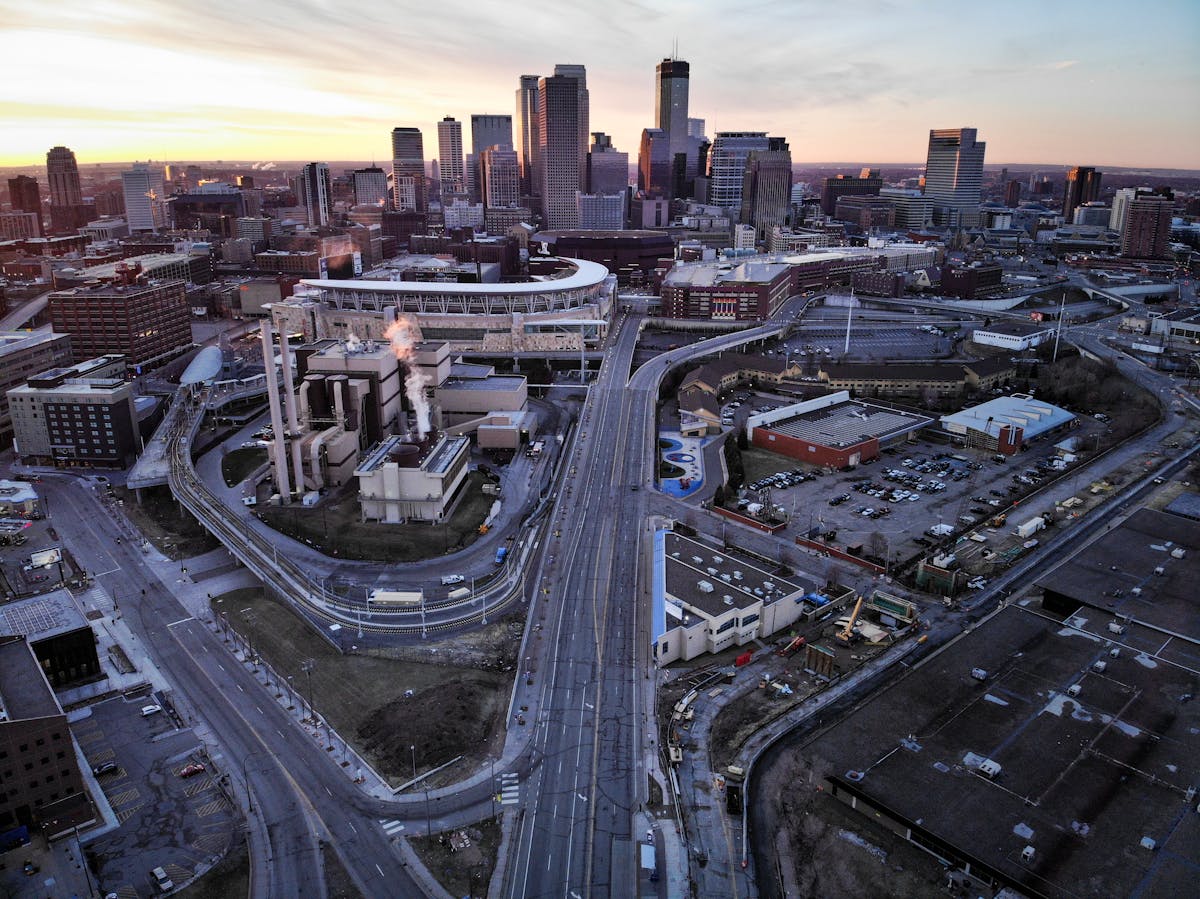
Traffic was noticeably light into Minneapolis on March 30, the first business day after the governor’s stay-at-home order went into effect. “What our objective is now is to move the infection rate out, slow it down and buy time,” Walz said, adding that “the place we cannot go to is when someone cannot get that ICU care.”
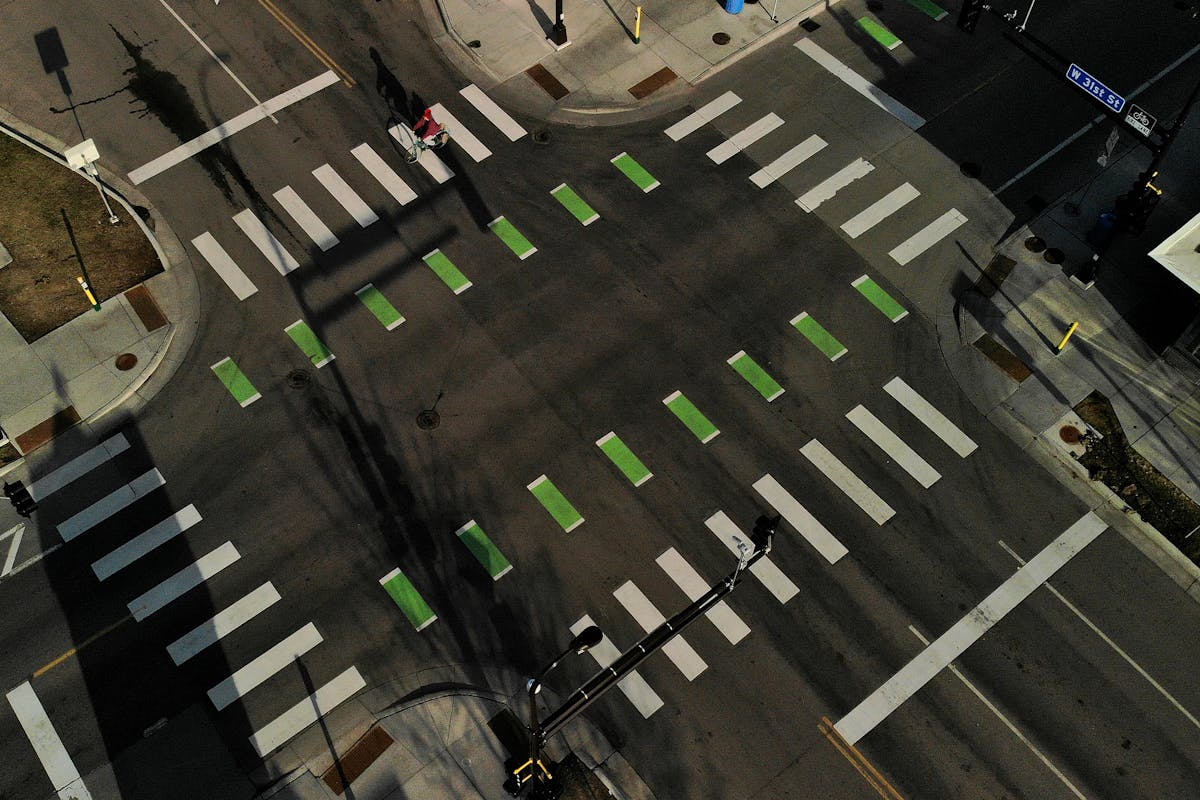
In Uptown, a lone biker crossed the street. Under the stay-at-home order, people are allowed to go out for exercise, grocery shopping, and other essentials, but they are encouraged to stay at home as much as possible.
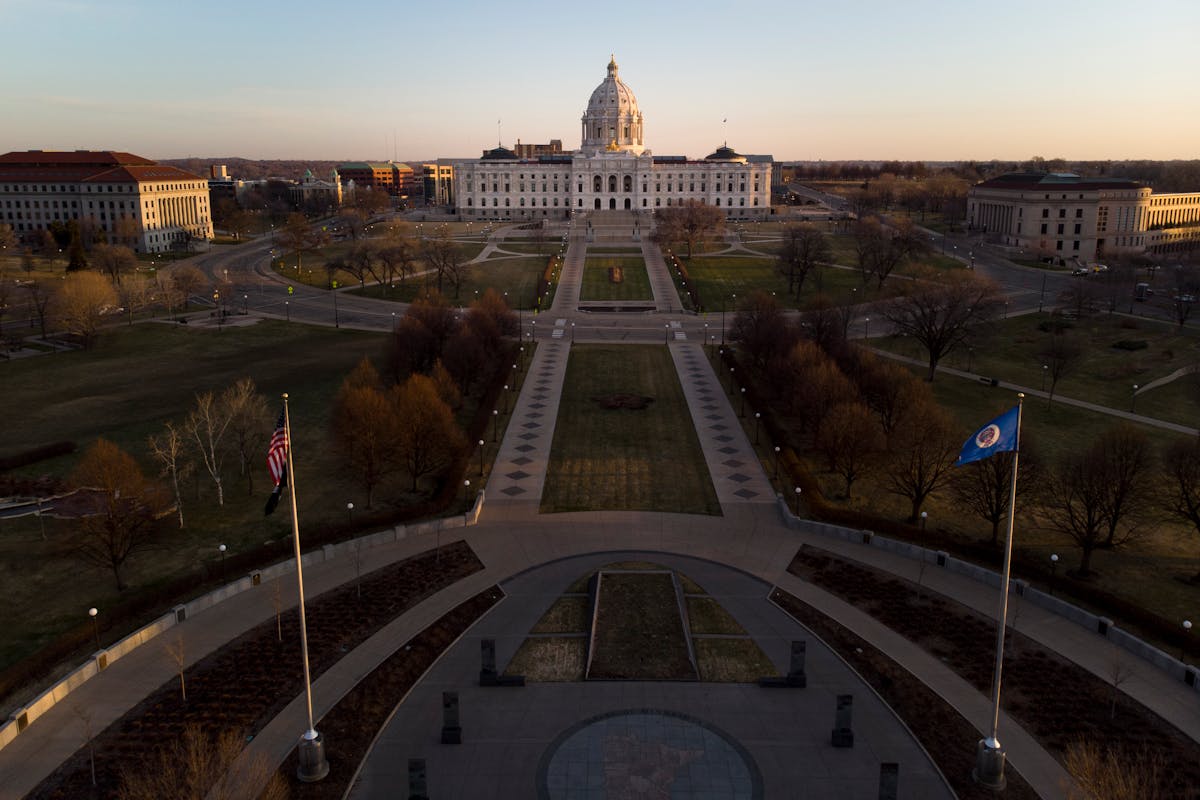
The Minnesota Capitol Mall was quiet on April 1, just after sunrise.
The front lines
Citizens have been told during the pandemic to stay away from others, especially those who might be sick. For health care workers, that isn't an option. A Mayo Clinic employee dressed in protective gear worked at a drive-through coronavirus testing site under a tent set up in the parking lot of the Mayo Family Clinic Northwest in Rochester on March 12. As of April 1, about 21,000 coronavirus tests had been given in the state.
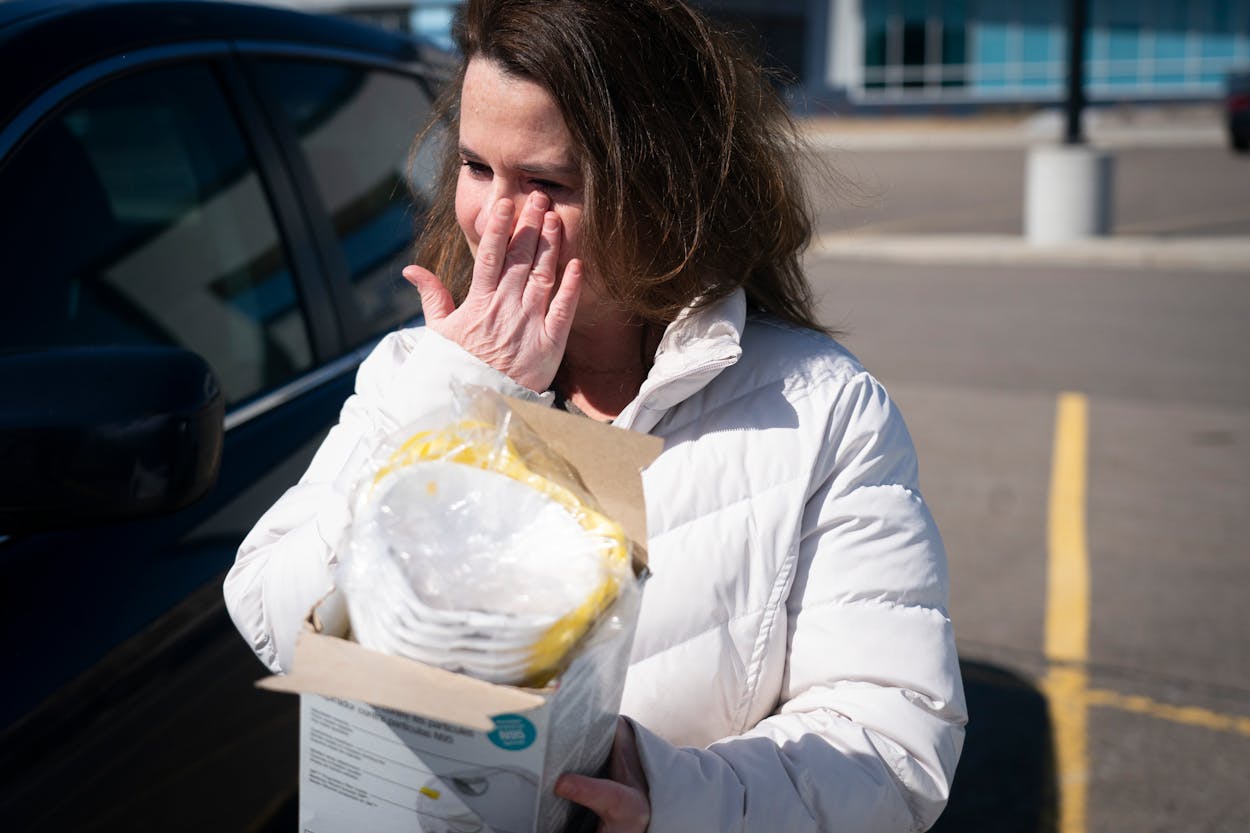
Kara Spike, a nurse at the COVID-19 unit at St. Joseph's Hospital in St. Paul, wiped away tears after she collected a box of respirator masks that her brother, an auto mechanic, had collected from his work for her and her colleagues to use as they work. He dropped them off for her in a parking lot at Ridgedale Mall in Minnetonka on March 20. There were about 20 masks, which would get the roughly nine people working in the unit through the weekend.
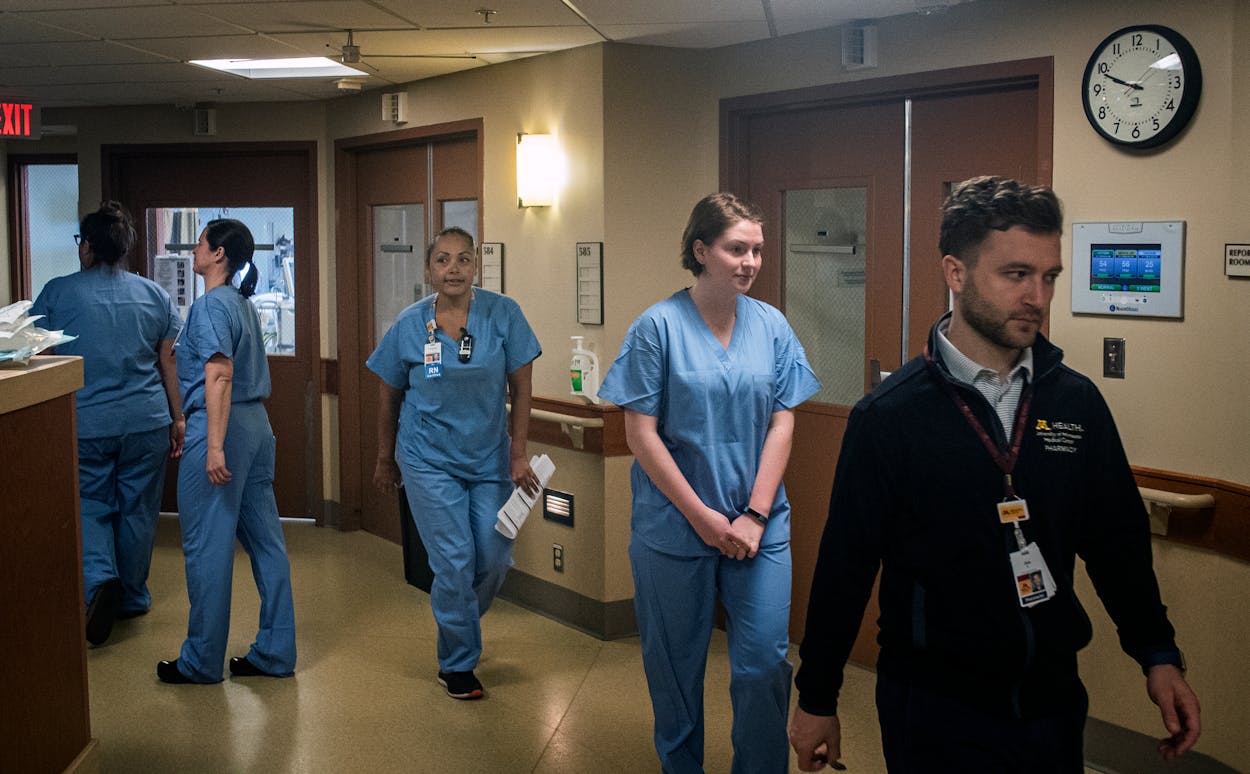
The medical team in the intensive care unit at Bethesda Hospital prepared for the first patient on March 26. Fairview has retrofitted the hospital as a COVID-19 treatment center. “COVID-19 presents challenging realities that will put unprecedented demand on our system and care teams,” Linda Wick, associate chief nurse executive for M Health Fairview, said in a statement. “By implementing the CDC’s cohorting guidance in our system, we are taking every measure available to prepare and protect the safety of patients and staff.”
Grounded
As social distancing becomes the new normal, travel rates have fallen sharply. At Minneapolis-St. Paul Airport on March 25, the airport was noticeably empty. Delta, the airport's dominant carrier, cut flights 40% and suspended all flights to Europe (except for London). “The speed of the demand falloff is unlike anything we've seen,” Ed Bastian, Delta chief executive, wrote in a memo to employees.
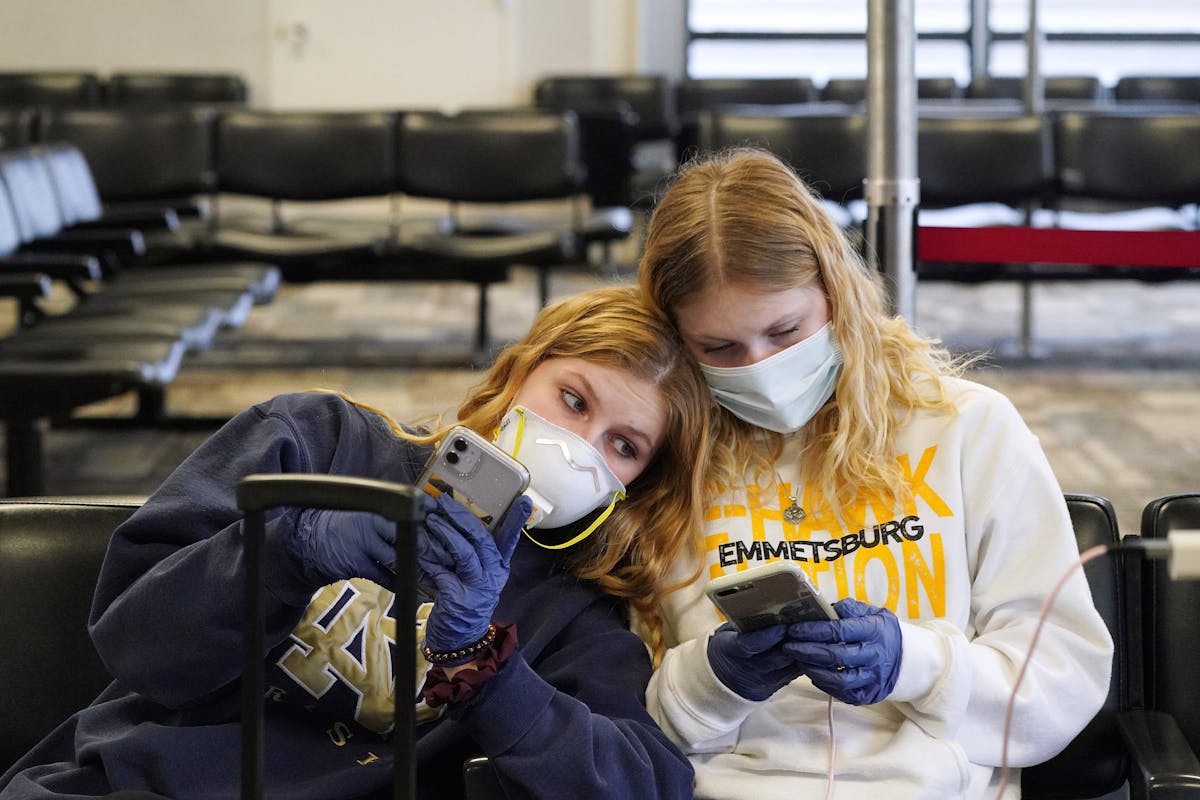
People who were at the airport seemed to be traveling out of necessity rather than for leisure. Rachel Miner, 15, left, of Emmetsburg, Iowa, and Carlotta Haas, 15, a German foreign exchange student from Dusseldorf, waited for Haas’ flight. She had been living with the Miner family but was called home. Schools across the country have switched to online classes.
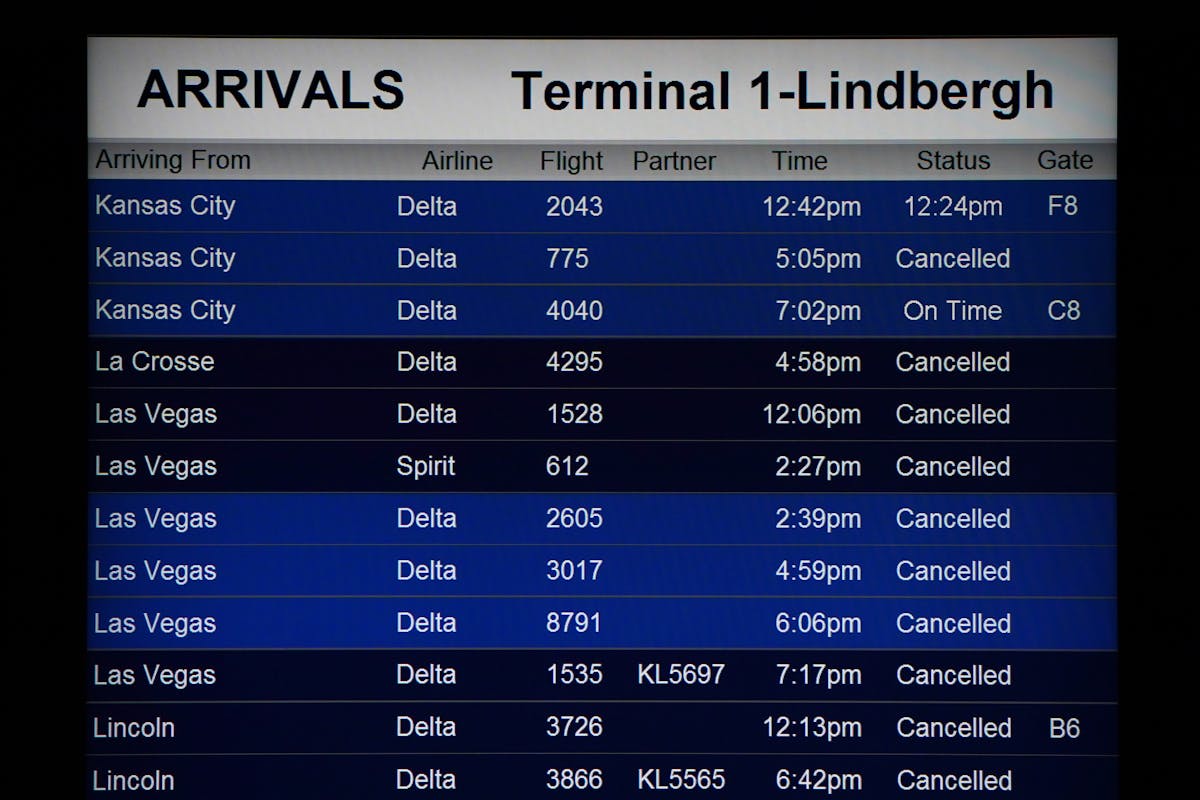
“Demand for travel is declining at an accelerated pace daily, driving an unprecedented revenue impact. Cancellations are rising dramatically with net bookings now negative for travel over the next four weeks,” Bastian wrote. “To put that in perspective, we're currently seeing more cancellations than new bookings over the next month.”
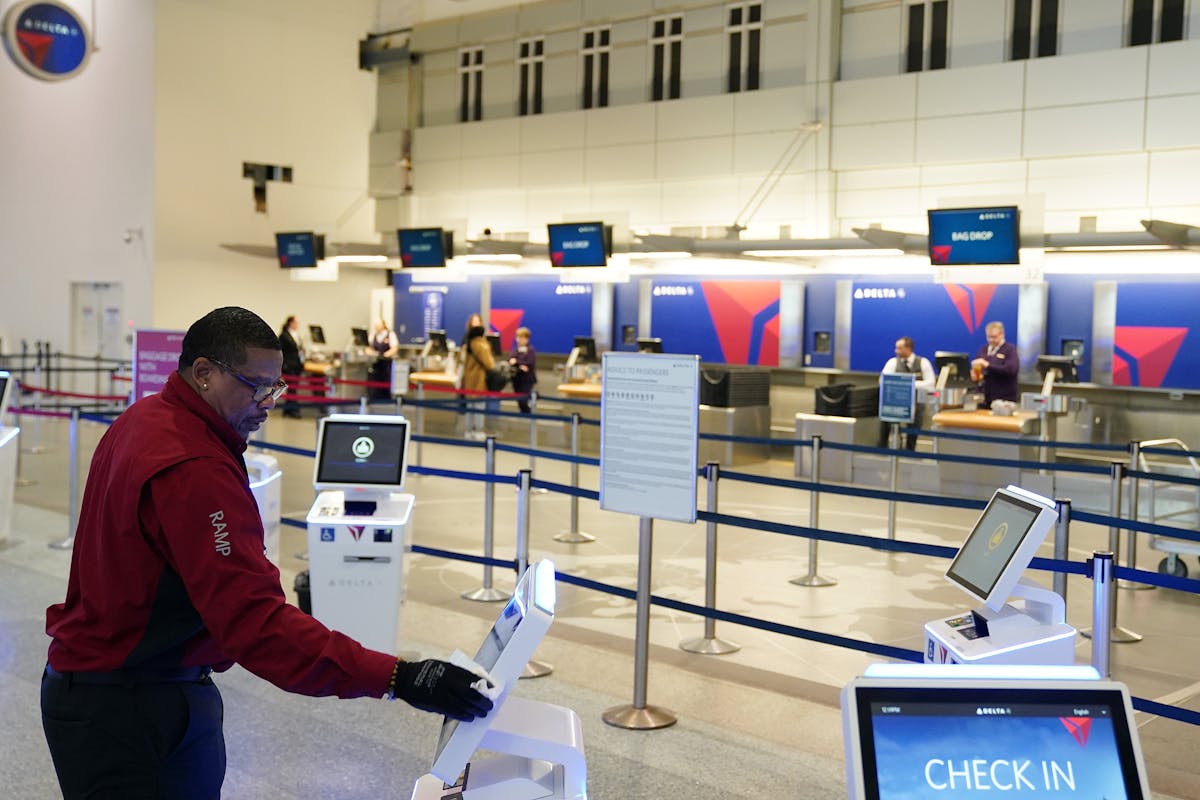
A Delta worker disinfected a touchscreen in the airport. Empty check-in areas were a common sight at MSP on March 25.
Deserted downtown
Traffic in Downtown Minneapolis has slowed to a trickle amid the pandemic. Bars, restaurants and other public gathering spaces are all closed through April, and employees are encouraged to work from home. Parking lots sit empty and streets are quiet.
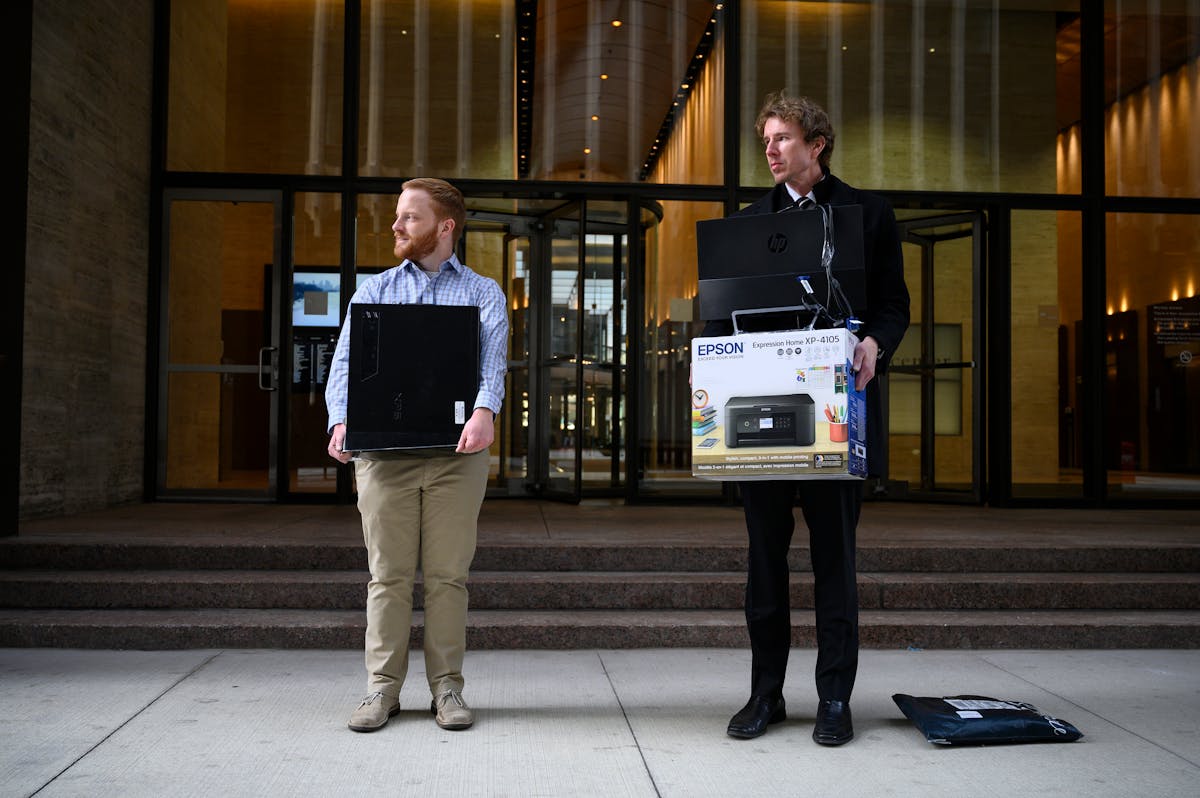
John Hanley, left, and James Skjong, who work in a downtown investment firm, waited outside the IDS Center for their driver, lugging home their computers.
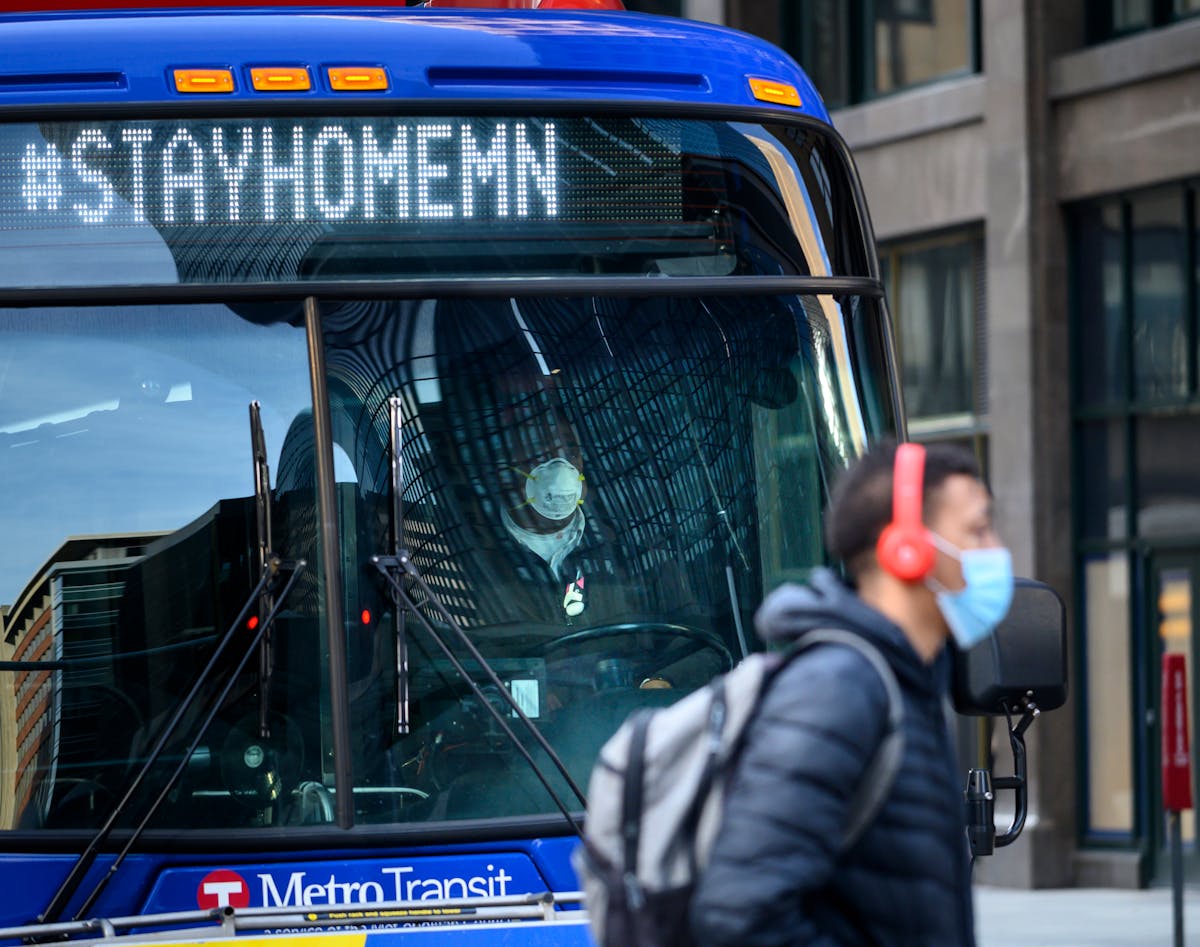
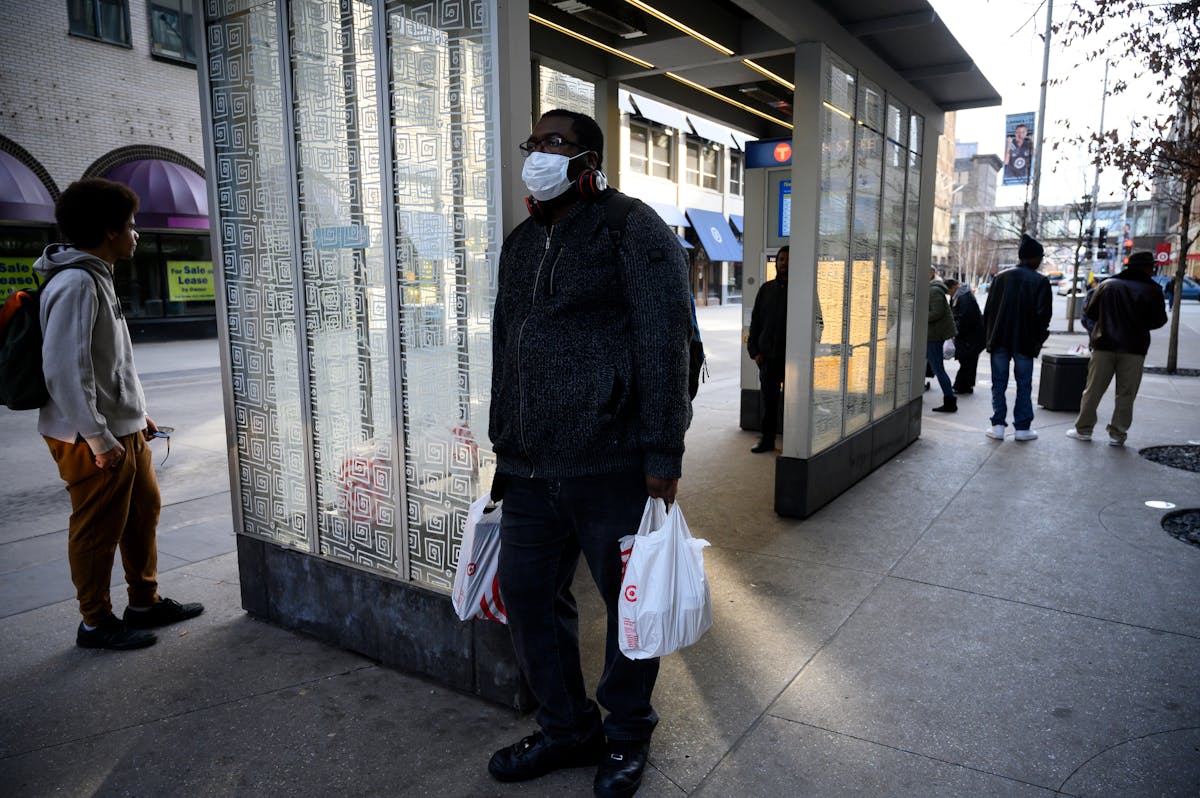
Masks are a common sight outside. Alistair Jones, right, wore a surgical mask while he waited to board a bus to his home in Uptown after wrapping up the workday and picking up groceries at Target downtown.
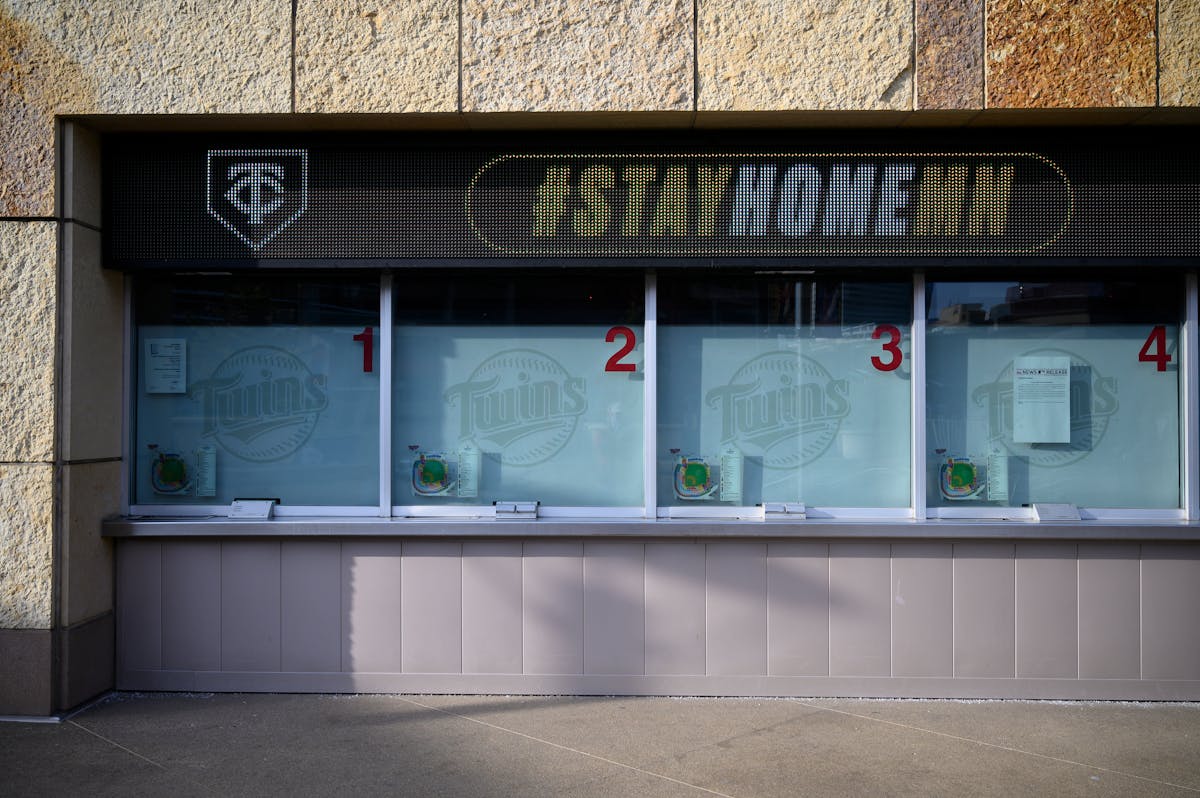
The Twins box office was shuttered Thursday evening, with a #STAYHOMEMN sign digitally displayed above. MLB has suspended the start of the baseball season; Opening Day was supposed to be March 26.
Government
Minnesota House Majority Leader Ryan Winkler spoke with members of the state’s emergency response community as they gathered -- though observing recommended distancing -- for a news conference on March 26 to ask the legislator to provide them with worker protections amid the pandemic.
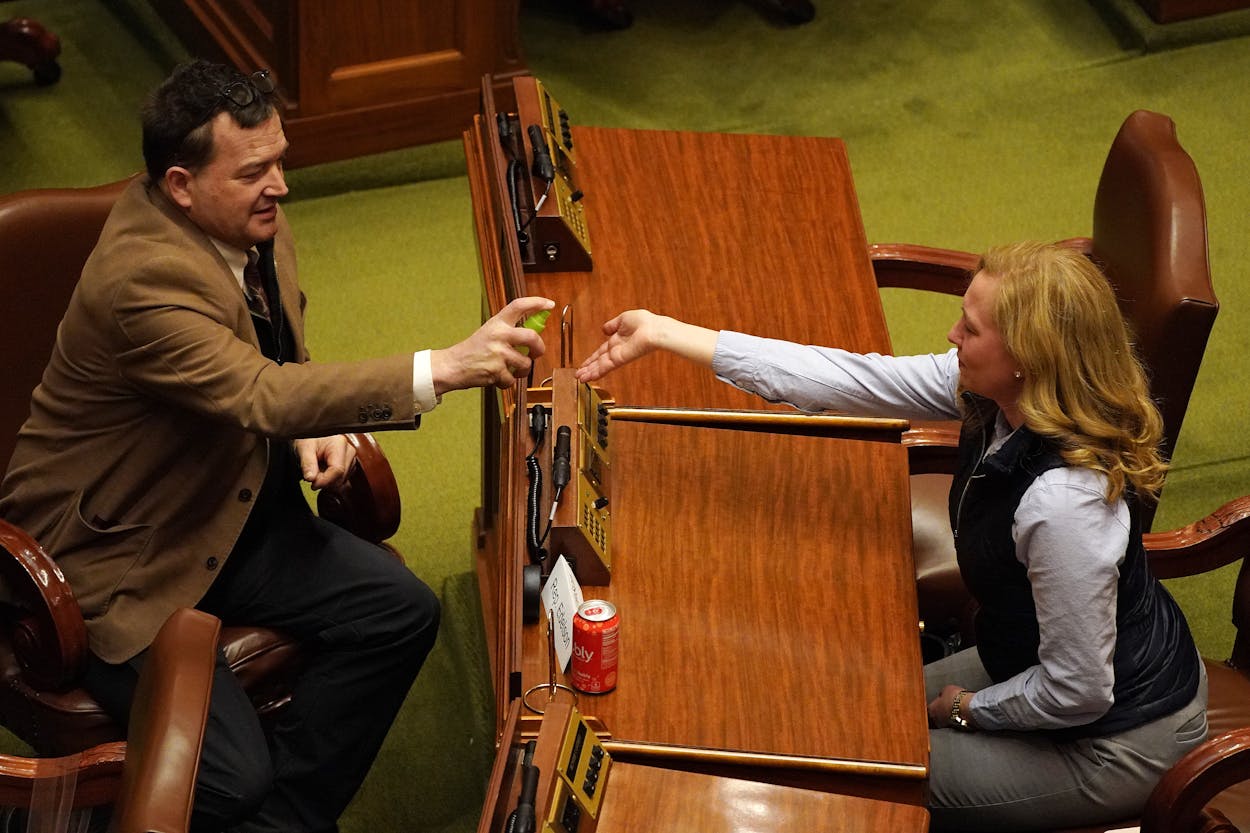
Rep. Leon Lillie, DFL-North St. Paul, shared hand sanitizer with Rep. Heather Edelson, DFL-Edina, as the House convened on March 26 to pass relief legislation. The day before, Gov. Tim Walz had announced the stay-at-home order.
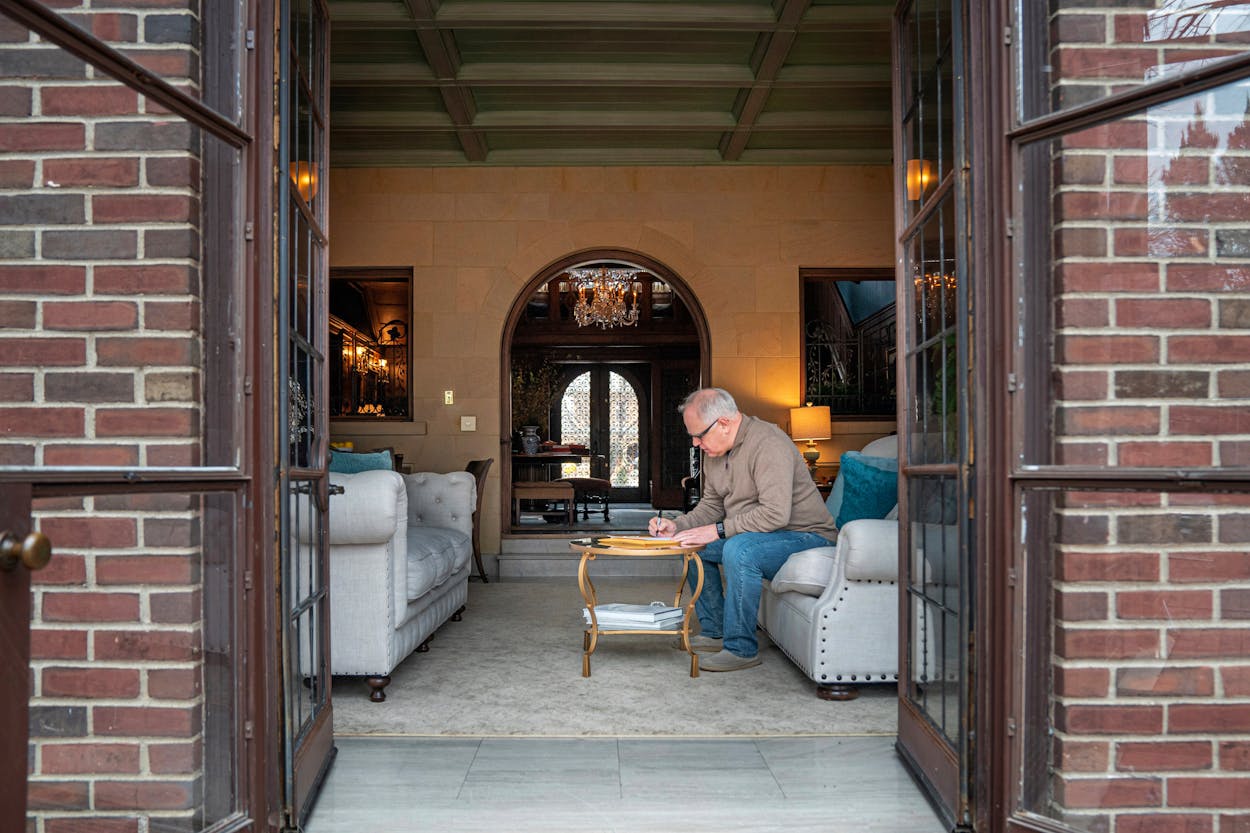
Walz signed the relief bill on March 28, allocating $330 million in COVID-19 aid, in St. Paul. Walz is under a 14-day quarantine after coming into contact with someone who tested positive for COVID-19; he is working from the governor's residence. “Before we’re done with this, each and every one of us will be touched by this,” he said.
Curbside confessions
The Rev. Erik Lundgren listened to confessions outside the Parish of Saints Joachim & Anne on March 25 in Shakopee. Lundgren would normally have held a day of confessions for hundreds of Catholic schoolchildren and parishioners to celebrate the Feast of the Annunciation, but because of COVID-19, he instituted confessions via drive-up or on the sidewalk.
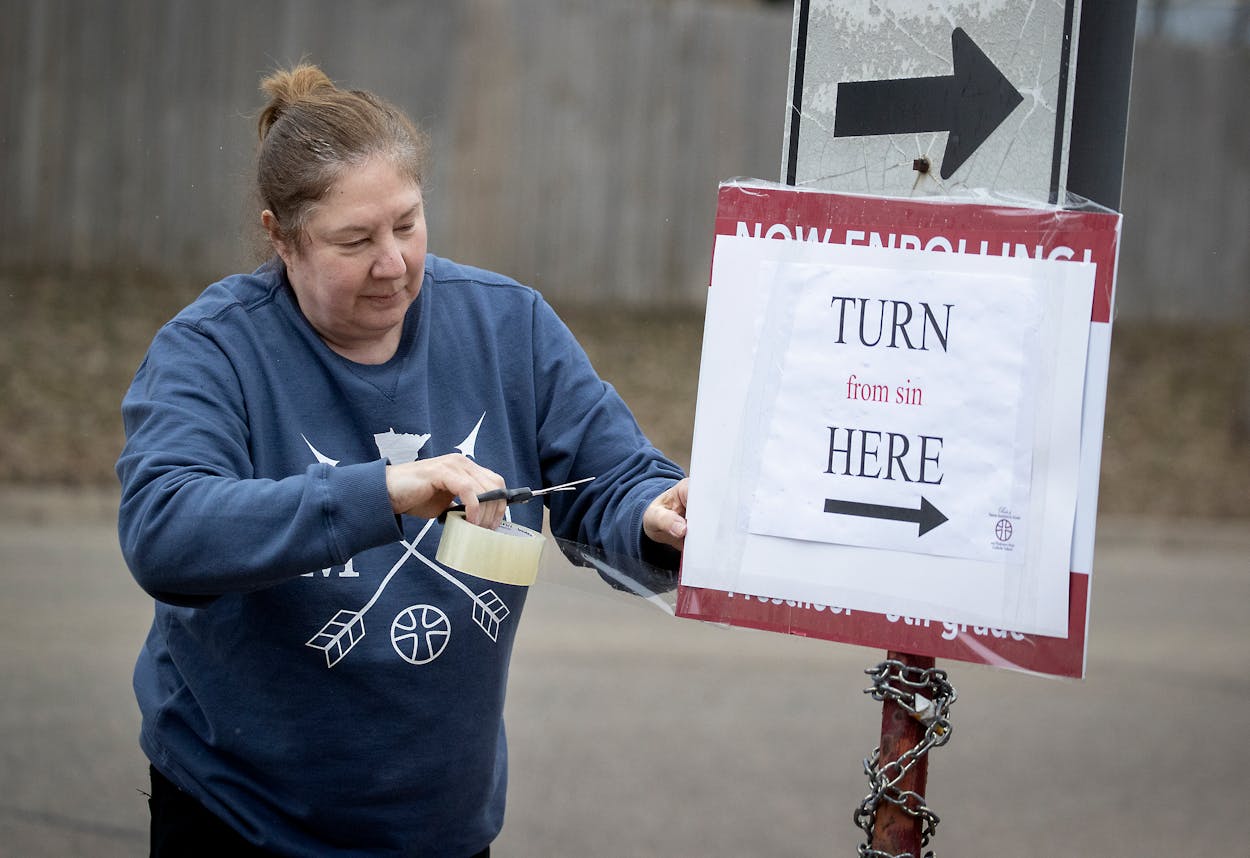
Carol Diethelm, director of music and funeral ministry, puts up signs for the drive-up confessions. The pandemic and resulting restrictions have promptedfaith leaders to offer alternatives to traditional services.
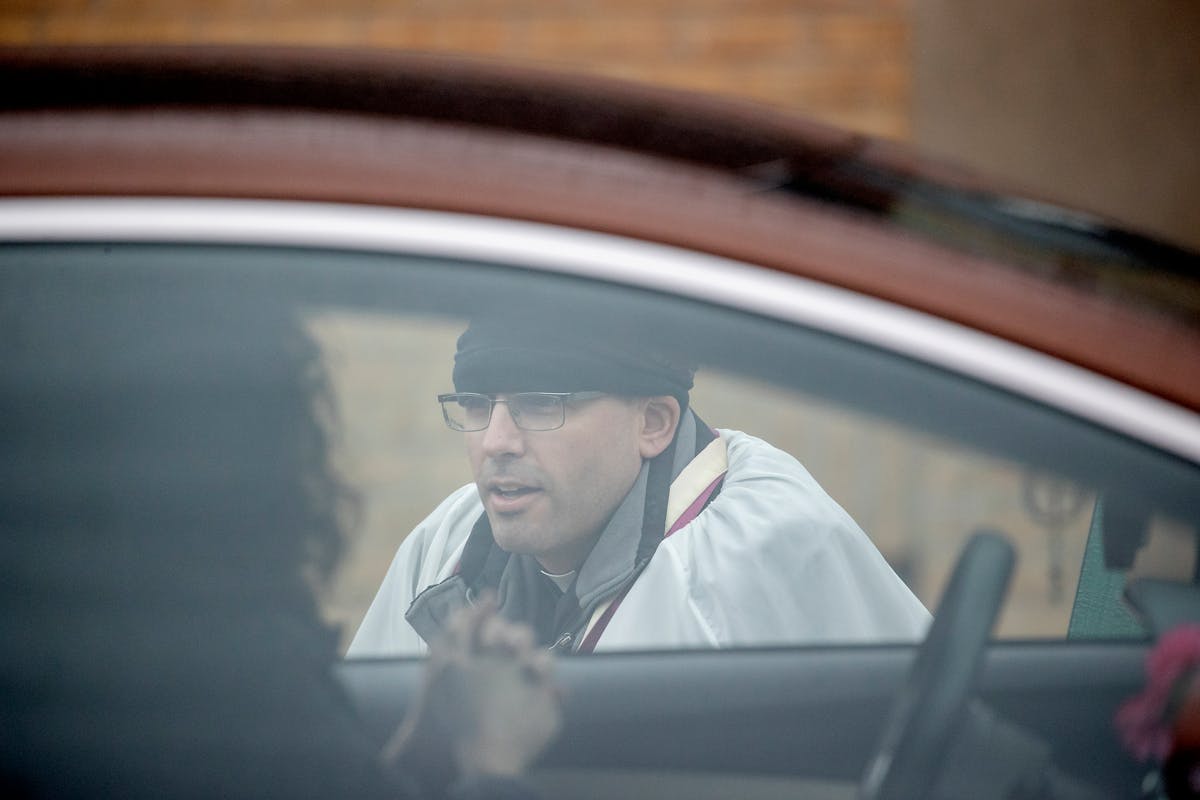
Lundgren, on the curb, spoke with a woman in her car. “I'd been hoping to do a drive-through confession thing for many years and our staff always said, ‘no, Father, that's a little ridiculous,’ but now it's not ridiculous. Now it's just what we have to do.”
Live on Zoom: ‘I do’
The wedding of Jamie White and Ross Buchanan wasn’t supposed to be like this. But when the pandemic threw a wrench in their plans, they decided they’d been waiting long enough. So they ditched the guest list, moved the ceremony to their living room, and set up a livestream so friends and family could join from a distance.
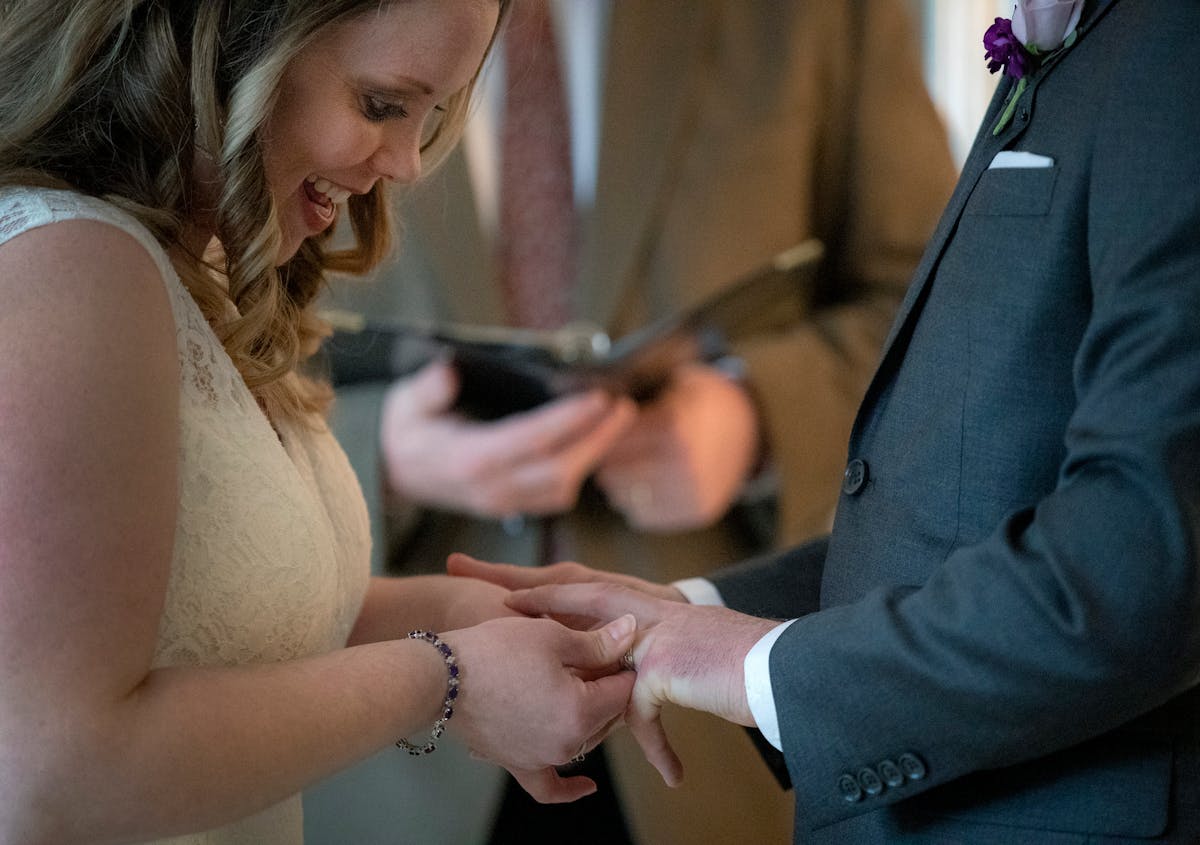
“It was nice to simplify and recognize what is really important about a wedding and a marriage,” Buchanan said. “It’s not about a place or all the things. It’s really about the commitment we’re making to each other and important people being able to be involved, even if remotely.”
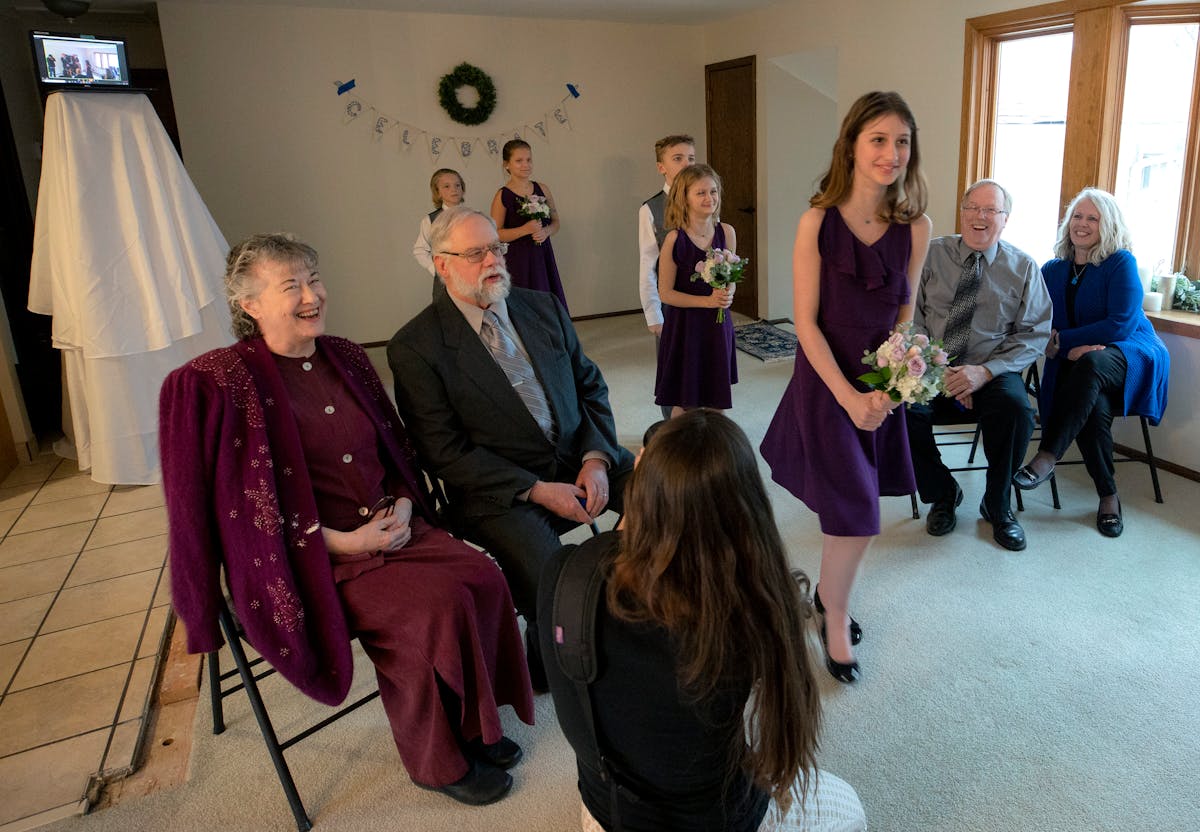
Their parents, dressed for the occasion, sat on chairs arranged in the living room as the bride and groom’s children made their entrance through the makeshift aisle, the girls wearing purple dresses and carrying bouquets of flowers. The couple had planned to honeymoon in Scottsdale, Ariz. That’s been postponed, of course, but they hope they’ll be able to make the trip soon.
Our staff-produced coronavirus coverage is available for free to non-subscribers as a public service. Please consider subscribing to the Star Tribune to help us continue this vital work.
More COVID-19 coverage
Credits
Photography Aaron Lavinsky, Alex Kormann, Renée Jones Schneider, David Joles, Richard Tsong-Taatarii, Anthony Soufflé, Glen Stubbe, Elizabeth Flores, Carlos Gonzalez
Photo editing Kyndell Harkness
Copy editing Catherine Preus
Design Anna Boone, Jamie Hutt, Josh Penrod
Development Anna Boone, Jamie Hutt